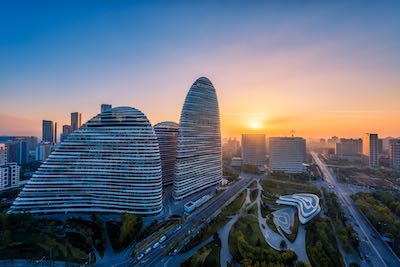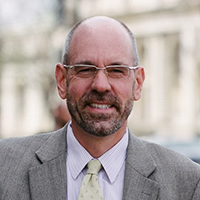
The profession of urban planning is deeply rooted in thousands of years of city-building practice. From the ancient cities of Mesopotamia to the rapidly urbanizing metropolitan regions of the modern world, the practice of urban planning organizes activities within a city and shapes the built environment in the service of improving the quality of life of local communities.
Cities around the world are growing rapidly to accommodate an additional 3 billion people within the next three decades. The significance and impact of urban planning has never been greater. We live in an unprecedented “great age of cities”.
Urban planners are busy finding new ways to deliver new value across the built environment; manage new risks, and foster a sustainable, equitable, and resilient urban future. The work of urban planners is not abstract policy-making; it requires leadership and stakeholder engagement at the scale of places, neighborhoods, cities, and metropolitan regions.
But how?
It Does Take a Village
Urban planning synthesizes knowledge from an array of disciplines and adjacent professions. Its origins are inextricably tied to the fields of architecture, engineering, economics, and governance. Civic leadership and the practical assessment of the public good have always resided at the core of urban planning, alongside the practices of public management which seek to align public and private resources.
However, the profession of urban planning is anything but stagnant. Contemporary urban planning practice reaches beyond traditional practices, to incorporate knowledge from sociology, public health, ecology, finance, digitization, and systems modeling, among many others. Urban planners must be polymaths; they must be adept at integrating and applying diverse expertise in ways that are both place-based and community-oriented.
Urban planners need to know a lot about a lot.
The ability to navigate and harmonize a family of interrelated professions is a profession in itself! Having the skills to communicate integrated knowledge to local communities and find meaningful and authentic pathways to decision-making lies at the heart of contemporary urban planning practice.
Architecture and Engineering
Urban planning’s architectural and engineering roots embrace physical infrastructure and the spatial delineation of what is public and private within a city. Decision-making is informed by the objectives of creating durable and functional systems, as well as the generation of cultural significance for communities. Our oldest urban planning text describes the goals of the city builder as being “firmitas, utilitas, venustas” or durability, utility, and beauty. Planners organize the activities of a city so that the city makes sense to the people it serves.
The city must be safe, comfortable, and aesthetically pleasing. Urban planners work closely with architects and engineers to create the rules, codes, and frameworks by which buildings, roads, and public spaces are regulated. These regulatory codes and standards are the means to meet the needs and aspirations of the community while adhering to contemporary principles of equity, sustainability, and resilience.
Economics and Governance
Building cities is by definition an expensive endeavor and all cities must attract investment capital in order to sustain themselves and grow. Urban planners need to understand the economic forces that shape urban growth and development, and they must find ways to make public and private investments which achieve both short-term and long-term goals.
Contemporary urban planning requires striking a delicate and responsive balance between regulatory viability and economic feasibility. Traditional public sector governance frameworks are supplemented by place-based partnerships and alliances which often seek to leverage the resources of local communities and private sector actors.
Sociology and Public Health
Sociology and public health bring people-centered and community-based goals to urban planning. While not new to the planning profession, the knowledge within these disciplines has grown dramatically in recent years, and urban planners must synthesize the explosion of data about local communities.
Planners assess the social dynamics and health of communities, ensuring that neighborhood life promotes social cohesion, inclusivity, and well-being. This involves understanding issues such as household income, housing affordability, and equitable access to healthcare and public resources. It also requires a careful and critical assessment of the historic legacies of social discrimination and the social determinants of population health.
Ecology and Sustainability
Adapting to climate change, changing weather patterns and ecology are some of the most important drivers of innovation in urban planning practice. No longer are the metrics associated with this knowledge assumed to be historically fixed or generalized. Planners incorporate place-based climate projections into their work, in order to shape how urban systems will make communities resilient to future climate conditions.
Cities are the level of governance where most climate change mitigation strategies are financed and implemented, including energy efficiency and electrification as well as strategies to make urban systems resilient to future shocks and stressors. Urban planners find new ways to shape a built environment that is not only livable for our contemporary communities but is also able to meet long-term sustainability goals.
What a big responsibility!
Finance, Digitization, and Systems Modeling
The articulation of financial strategies is core to urban planning practice. Planners must develop cost-effective and market-feasible solutions, identify public subsidies to the marketplace, and secure funding for public investments. Urban planners must understand the contours of the local economy and devise community-based solutions to attract investment capital from both the private and public sectors. In some cases, this work might include close collaboration with philanthropic organizations seeking to make investments outside the bounds of market-based feasibility.
Contemporary urban planning practice harnesses the power of digitized, geo-located data. New tools like Geographic Information Systems (GIS) empower urban planners to make data-driven decisions. New geospatial analysis allows planners to perform complex spatial analysis of urban places, communities, and systems. The introduction of artificial intelligence empowers planners to conduct complex data analytics, and data-enabled technologies are revolutionizing the professional discipline and practice, letting planners make more informed and precise decisions.
Systems modeling allows urban planners to simulate and analyze the complex interactions within urban environments. By using digital twins and predictive models, planners can anticipate the impacts of various interventions and optimize urban strategies and designs for better outcomes.
The High Stakes of Urban Investments
Once made, urban investments are not easily undone. Whether it’s building a new transit system, developing a housing project, or revitalizing a downtown area, these decisions have long-lasting implications typically measured in decades.
You want to get it right!
Asking the right questions and formulating the most effective strategies enables urban planners to play a crucial role in facilitating how communities learn, act, and invest responsibly. Planners engage stakeholders, conduct thorough analyses, and develop strategic plans that align a community’s actions to a vision and performance-based goals.
The 21st century presents unprecedented challenges to urban planners, from the urgent risks of climate change to the complexities of how national and global systems impact local places. Urban planners are called upon to lead with innovative solutions that produce multifaceted outcomes and anticipate secondary and tertiary impacts on communities.
Planners must champion sustainable practices, advocate for social equity, and harness technological advancements to build cities that are resilient, inclusive, and adaptable.
Fostering Urban Innovation in the Nation’s Capital
Drawing on historic legacy and unprecedented challenges alike, the Master’s in Urban & Regional Planning program at Georgetown University is a beacon of innovation.
Located in the heart of Washington, D.C.—one of the world’s most carefully planned cities and a global center of professional networks and innovation—Georgetown’s program provides a unique learning environment for aspiring urban planners. Our location and networks offer students opportunities to engage with influential policymakers, leading urban planners, and cutting-edge projects. The city itself serves as a living laboratory, where students can observe and analyze urban planning principles in action.
Community of Practice
Georgetown’s students are not only learners but active participants in a vibrant network of professionals, scholars, and practitioners. Our faculty includes scholar-practitioners, highly accomplished professionals, and applied researchers. Our alumni retain an open dialogue with the program and our partners, fostering deep professional networks. This dynamic community of practice ensures that students are prepared to tackle real-world urban challenges and step into key positions of leadership.
Comprehensive Curriculum
The program’s curriculum is comprehensive and forward-thinking. It equips students with the skills and knowledge to creatively solve urban problems through data-enabled, performance-oriented, and globally competent approaches. Courses cover a wide range of topics, from sustainable urban design and urban mobility to public health and digital infrastructure.
Georgetown’s program integrates climate change into its curriculum as a core attribute, avoiding treating these key topics as a separate or secondary field of practice. The integrative practices of urban planning are elevated as a strategic methodology for achieving equitable, resilient, and sustainable outcomes.
Students learn to develop urban solutions that are inclusive and just, ensuring that communities benefit from urban investment and development. Students are trained to plan cities that can withstand and adapt to future environmental, social, and economic shocks.
Georgetown University is committed to producing a new generation of city builders and community developers. Graduates of the program are equipped to lead and innovate in the field of urban planning, driving positive change in cities around the world. They emerge as professionals who can navigate the complexities of urban environments and create spaces that enhance the quality of life for all residents.

